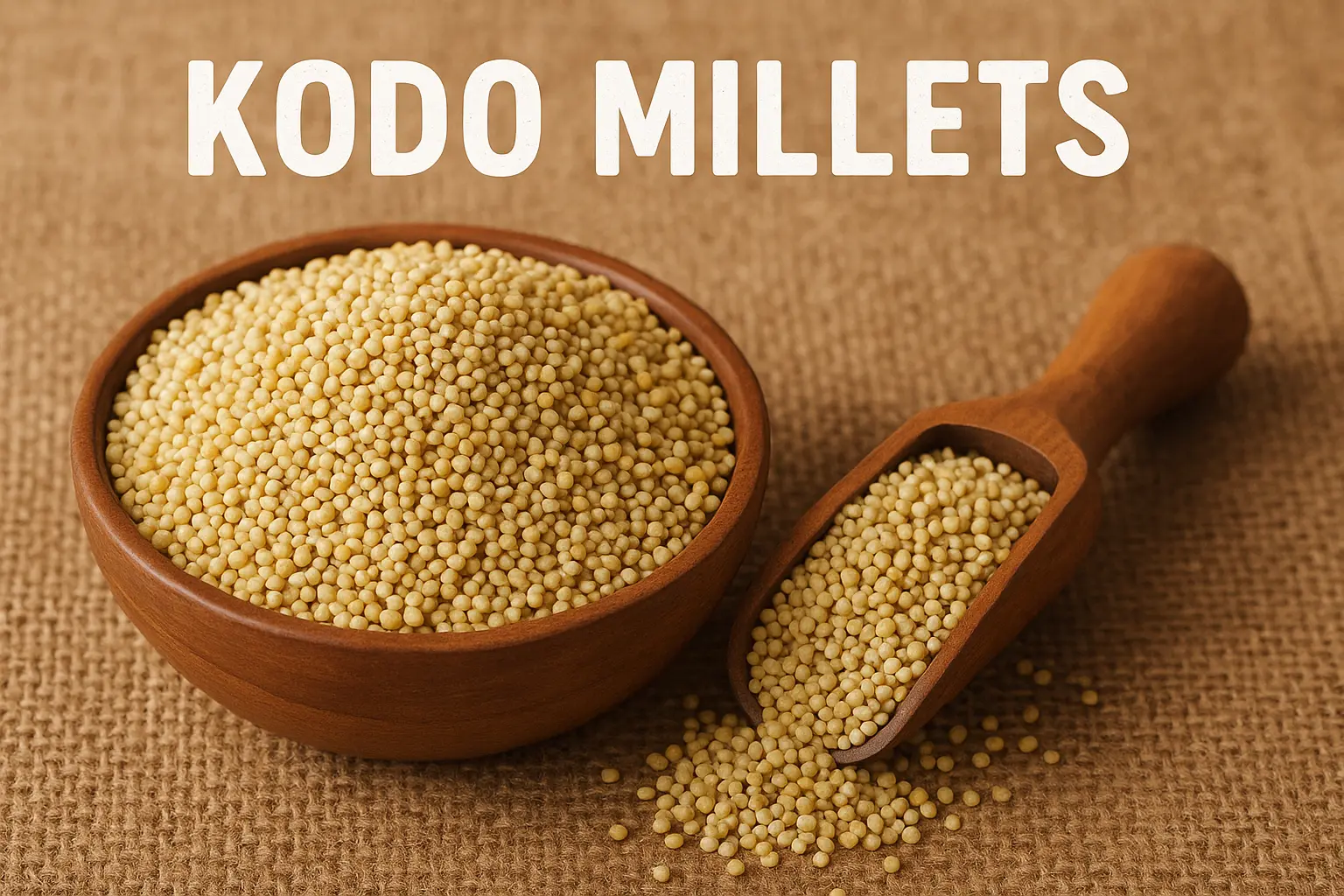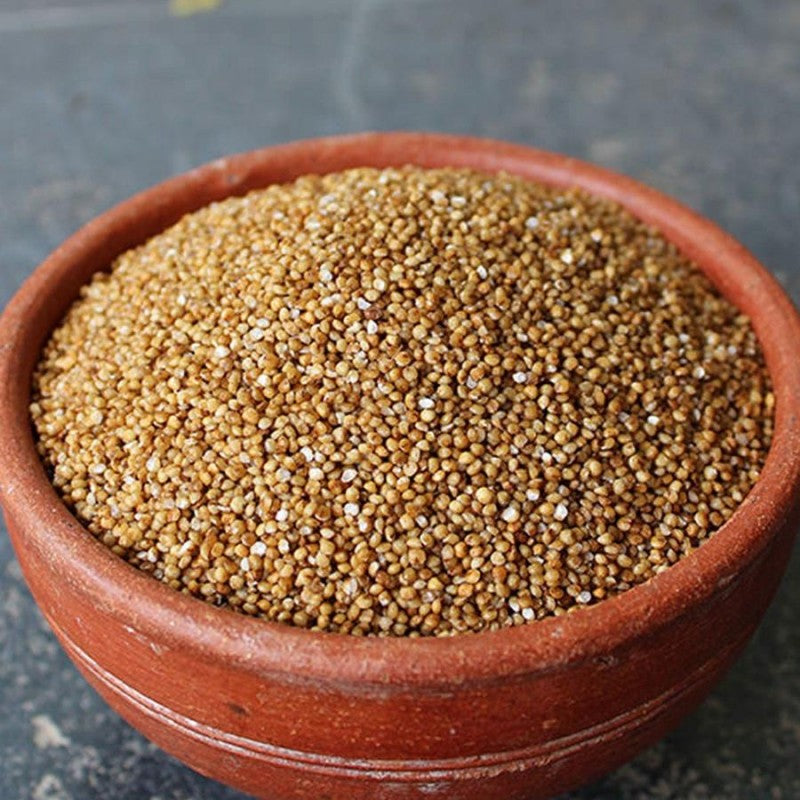Kodo Millets

Contents
- 1 Kodo Millets: The Ancient Superfood Making a Modern Comeback
Kodo Millets: The Ancient Superfood Making a Modern Comeback
In an era where quinoa and chia seeds dominate the superfood conversation, there’s an ancient grain that’s been quietly nourishing communities for thousands of years: Kodo millets (Paspalum scrobiculatum). These small but mighty grains are experiencing a well-deserved renaissance as health-conscious consumers and sustainable agriculture advocates rediscover their remarkable benefits.
What are Kodo Millets?

kodo millets
Kodo millets, also known as cow grass, rice grass, or ditch millets, are one of the oldest cultivated grains in the world. Native to India, these hardy crops have been a dietary staple in rural communities across Asia and Africa for over 3,000 years. The grains get their name from the Kannada word “haraka,” which eventually evolved into “kodo.”
Unlike their more famous cousins like wheat or rice, kodo millets thrive in challenging conditions – drought-prone areas, poor soils, and regions where other crops simply won’t grow. This resilience has made them a crucial food security crop for millions of people, particularly in semi-arid regions.
Nutritional Powerhouse
Don’t let their small size fool you – kodo millets pack an impressive nutritional punch:
Protein Power: With 8-9 grams of protein per 100 grams, kodo millets contain more protein than rice and wheat, making them an excellent plant-based protein source.
Fiber Rich: The high fiber content (9 grams per 100g) promotes digestive health, helps regulate blood sugar levels, and keeps you feeling full longer.
Mineral Marvel: Kodo millets are particularly rich in:
- Iron (essential for preventing anemia)
- Calcium (for bone health)
- Phosphorus (for energy metabolism)
- Magnesium (for muscle and nerve function)
- Zinc (for immune support)
Low Glycemic Index: With a GI of around 25-35, kodo millets release energy slowly, making them ideal for diabetics and anyone looking to maintain steady energy levels.
Gluten-Free: Naturally gluten-free, they’re perfect for those with celiac disease or gluten sensitivity.
Health Benefits That Matter
Blood Sugar Management
The combination of high fiber, protein, and complex carbohydrates makes kodo millets exceptional for blood sugar control. Studies have shown that regular consumption can help improve insulin sensitivity and reduce the risk of type 2 diabetes.
Heart Health
The magnesium and potassium content support cardiovascular health by helping regulate blood pressure and heart rhythm. The fiber also helps lower cholesterol levels.
Weight Management
The high fiber and protein content promote satiety, helping you feel full with smaller portions. This makes them an excellent grain for those looking to maintain or lose weight.
Digestive Wellness
The prebiotic fiber in kodo millets feeds beneficial gut bacteria, promoting a healthy microbiome and improved digestive function.
Culinary Versatility
One of kodo millets’ greatest strengths is their adaptability in the kitchen. Here are some popular ways to incorporate them into your diet:
As a Rice Substitute: Cook them like rice for a nutty, slightly chewy alternative that pairs well with curries and vegetables.
In Porridge: Make a nutritious breakfast porridge with milk or plant-based alternatives, topped with fruits and nuts.
Flour Power: Ground into flour, they can be used in rotis, pancakes, and baked goods, adding nutrition and a unique flavor profile.
Salads and Bowls: Cooked kodo millets add texture and nutrition to grain bowls and salads.
Traditional Preparations: In India, they’re used in dishes like kheer (sweet pudding), upma (savory porridge), and dosas (fermented crepes).
Cooking Tips for Success
Cooking kodo millets requires a bit more attention than regular rice:
- Rinse thoroughly: Wash the grains multiple times until the water runs clear to remove any bitterness.
- Roast for flavor: Dry roasting the grains for 2-3 minutes enhances the nutty flavor.
- Use the right ratio: Use 1:2.5 or 1:3 ratio of millets to water for the best texture.
- Cook slowly: Simmer on low heat for 20-25 minutes for perfectly cooked grains.
Environmental Champion
Beyond personal health benefits, choosing kodo millets is an environmentally conscious decision. These crops require minimal water compared to rice or wheat, making them incredibly sustainable. They’re naturally pest-resistant, reducing the need for harmful pesticides, and they actually improve soil health through nitrogen fixation.
As climate change challenges traditional agriculture, drought-resistant crops like kodo millets offer hope for food security in vulnerable regions.
The Challenges and Solutions
Despite their benefits, kodo millets face some challenges. Processing can be labor-intensive, and the grains require careful preparation to remove any potential toxins. However, modern processing techniques and increased awareness are making quality kodo millets more accessible to urban consumers.
Making the Switch
If you’re ready to incorporate these superfoods into your diet, start slowly. Begin with replacing rice once or twice a week with kodo millets. Experiment with different cooking methods and recipes to find what works for your taste preferences.
Look for organic, well-processed kodo millets from reputable suppliers. Many health food stores and online retailers now carry high-quality options.
The Future is Ancient
As we grapple with modern health challenges and environmental concerns, ancient grains like kodo millets offer wisdom from our past. These resilient, nutritious grains represent a return to sustainable, healthful eating that nourishes both our bodies and our planet.
By embracing kodo millets, we’re not just making a dietary choice – we’re supporting biodiversity, sustainable agriculture, and food systems that have sustained communities for millennia. In a world obsessed with the next big superfood trend, perhaps the answer has been growing in our fields all along.
Ready to give kodo millets a try? Start with a simple pilaf recipe, and discover why these ancient grains are perfectly suited for modern wellness.
